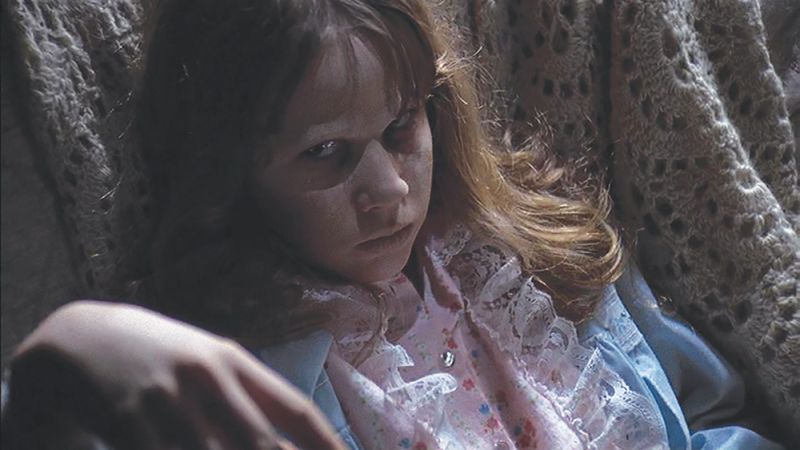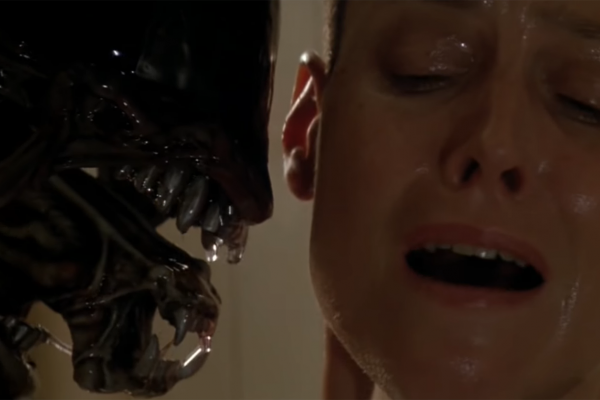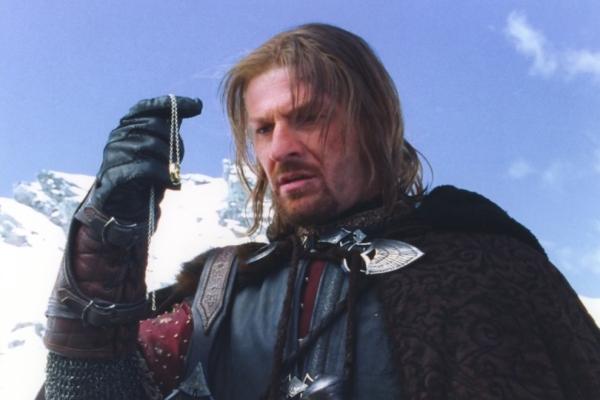THE PRIEST WALKS into the bedroom to face the little girl. It’s not a little girl, though. Something dark, something other looks out from her eyes. It opens her mouth to spew blasphemies, obscenities. The priest raises a crucifix, shouting, “The power of Christ compels you!”
So goes The Exorcist, the 1973 Oscar winner directed by William Friedkin. As a 17-year-old, I was not prepared for the visceral horror of seeing a possessed young Regan (Linda Blair) serve as the battleground between God and the devil. Neither were my Southern Baptist youth group friends who watched with me in my home. And neither were their parents, who (according to my long-suffering mother) were quite angry that I had hosted this viewing.
On the surface, those parents’ horror is understandable. The Exorcist more than earns its R rating, with gore and a good bit of blasphemy. But sit with Pazuzu (the demon) for a little longer, and it becomes clear that the film aligns well with conservative evangelical politics — a perspective in which I was raised and which persists in many corners of the U.S. church today.
The Exorcist was part of the decade-plus horror boom that manifested as a reaction to the massive societal upheaval the United States experienced after World War II. From the civil rights movement to white flight into newly constructed suburbs and the resulting urban upheaval, white Americans were afraid. Second-wave feminists delivered the birth control pill and reproductive rights while hippies promoted free love. Scant years after the Andersons and the Cleavers acquainted Ameri-cans with the nuclear family, patriarchy was under attack. Plenty of us were already wondering if Father really did know best.
Into that anxiety, Friedkin delivered a story about a single mother whose daughter is possessed by an evil power (whose early manifestations sound a lot more like puberty than Pazuzu). What can stop evil from overwhelming this broken home? Only the arrival of a steadying father figure. The Exorcist is a profoundly conservative embodiment of late-20th century American anxieties. It’s not alone in this; many of the films we now regard as horror classics from this period — Rosemary’s Baby, Black Christmas, Halloween, and Alien, for instance — project fears around reproductivity that’s no longer under (men’s) control.
This is the real power of the monster. The word comes to us from the Latin monstrum, which means “that which appears.” It’s from the word monere, which means “to warn.” Monsters are signs, omens. They’re prophetic, revealing truths hidden by the dominant cultural narrative.
Horror fiction tends to crest during times of social anxiety, so it’s no wonder that the last several years have seen a glut of horror, both in the art house and grindhouse persuasion. Similarly, horror scholarship is booming, with academics peeking under the bed and into the basement to see what anxieties and obsessions are going bump in the night. History professor W. Scott Poole, in his landmark book Monsters in America, observed: “American monsters are born out of American history. They emerge out of the central anxieties and obsessions that have been a part of the United States from colonial times to the present and from the structures and processes where those obsessions found historical expression.”
In other words, monsters serve as signposts, pointing at systems and structures that work to protect the status quo. They are liminal creatures who live in the shadows — and in the cracks in our cultural narratives. When you stumble upon a monster (or when it leaps out of the dark at you), you’ve found something that doesn’t fit in. The question is who decided it doesn’t fit.
culture.lede_exorcist.png

WHEN THE CHURCH MAKES MONSTERS
POOLE OBSERVES THAT some of our most ancient myths insist the order of the world is built from the bones of a monster slain by a god. The creation poem of Genesis 1 is a response to the Babylonian creation epic, wherein Babylon’s chief god, Marduk, slays the goddess/sea dragon Tiamat, cutting her in half and using the two halves for the waters above and below the dome of the sky. The mythmaking society — be it Babylon, Israel, or the United States — is responsible to identify and exorcise that which doesn’t fit. Though the poet of Genesis 1 pitched Tiamat and replaced Marduk with Yahweh, this ancient religious logic remains, enshrined in the purity codes that label some clean and others unclean. The unclean, of course, must be driven from the camp, the city, the people.
One of today’s most prominent horror tropes is the idea that “humans are the real monsters.” (It has found particular purchase in zombie stories; looking at you, The Walking Dead.) This is the real gift of horror. There are, after all, no people under the stairs, no creature in the blackest lagoon. But history shows us that even when the monsters aren’t real, the consequences can still be deadly.
Colonial Americans executed numerous women as witches, certain they were afflicting crops, children, and wayward husbands with so-called black magic. No wonder playwright Arthur Miller, in seeking to illustrate the dangers of the Red Scare of the 1950s and ’60s, reached back to Salem for The Crucible. Communists used not black magic but red philosophy to wage their terrible war on American values — or so we were told.
Intentionally or not, dominant culture often makes monsters out of vulnerable populations, therein maintaining or reestablishing the status quo. We seek to exorcise the other-ness out of us by exorcising them. Christians make our monsters too. Churches who oppose LGBTQ Christians demonize them, continuing to advance the false claim that queer persons — men especially — are pedophiles who seek to groom children for sexual pleasure. Such beliefs manifest as Christians advocating against queer persons’ right to adopt (or even serve in a church’s kid ministry). Queer persons, according to these churches, are a danger to kids. Black Christians — particularly those who operate in predominantly white denominations and institutions — face characterization as apostates or Marxists when they call those bodies to account for racism. Historian, author, and activist Jemar Tisby, for example, is frequently labeled a Marxist because he employs critical race theory methodologies in his scholarship (the Red Scare is back! What’s a monster without a bad sequel!?). But many of the same denominations and institutions who decry scholars like Tisby as Marxists and “reverse-racists” formed a voting bloc that elected an open white supremacist to the U.S. presidency in 2016.
By demonizing queer or female Christians or believers of color, by insisting that these persons are enemies of the gospel, those who benefit from the status quo provide a convenient target for our anxieties about the future of faith in a rapidly changing world. But the real danger to faith is a status quo that relies on marginalizing rather than standing with the marginalized. After all, as the preacher in Hebrews reminds us, Jesus is the one who was crucified outside the city (13:12). Like the scapegoat offered to Azazel (another biblical monster!), Jesus is found not in the center of the camp among the clean but among the outcast and unclean. Out among the monsters.

Got something to say about what you're reading? We value your feedback!







